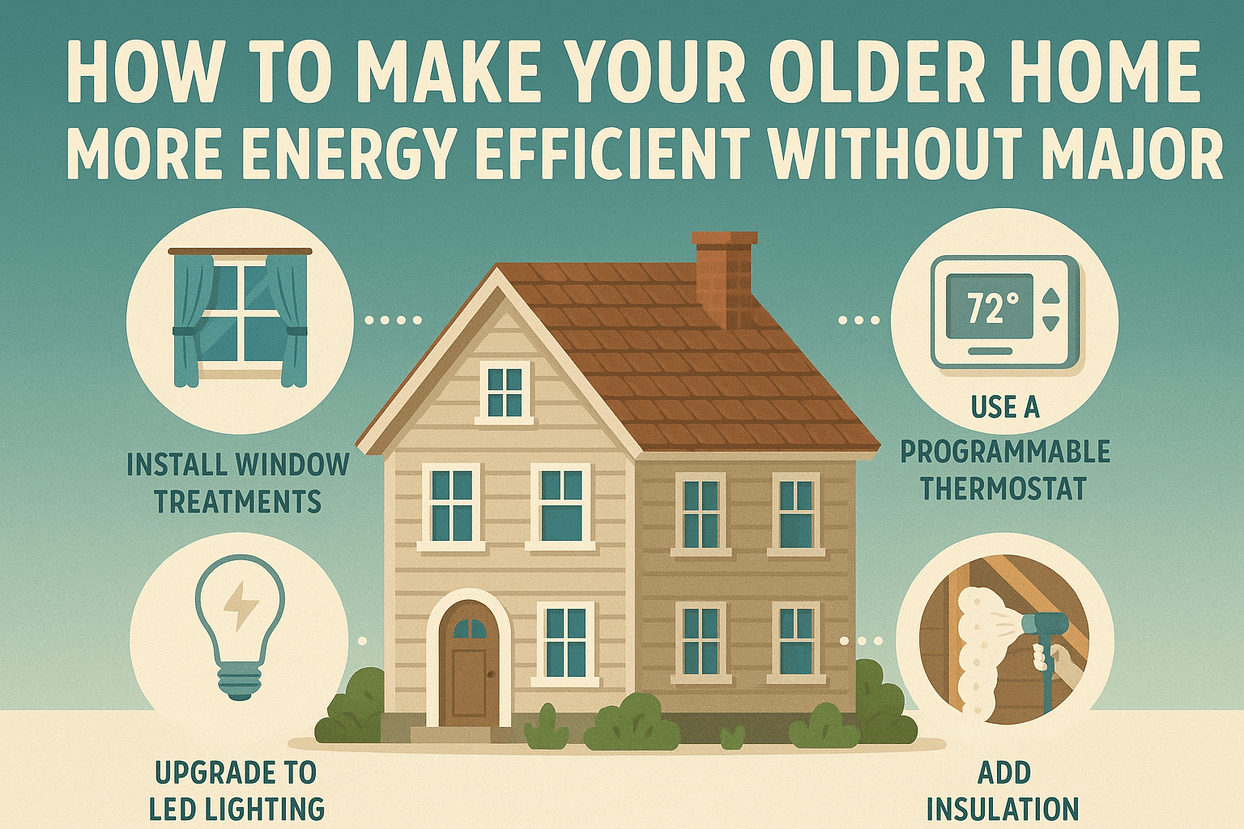Older homes have charm, but they often come with high energy bills. Luckily, you don’t need major renovations to boost energy efficiency. Below are practical, affordable tips that make a noticeable difference.
Seal Gaps and Cracks
Small leaks in walls, doors, and windows cause big energy loss. Use weather stripping for doors and caulking around windows. Foam sealant works great for gaps in attic hatches and plumbing entry points. This reduces drafts and keeps indoor temperatures stable.
Upgrade to LED Lighting
LED bulbs use 75% less energy and last 25 times longer than incandescent lights. Switch out all old bulbs. Choose warm white LEDs to maintain a cozy, classic ambiance. It’s a simple change that cuts electricity costs fast.
Install Smart Thermostats
A smart thermostat adjusts temperatures automatically. It learns your habits and lowers energy use when you’re not home. Models like Nest or Ecobee are user-friendly and can be controlled from your phone.
Use Heavy Curtains or Thermal Drapes
Thick window coverings reduce heat loss in winter and block sun in summer. Choose thermal-lined curtains to insulate rooms effectively. Open them during sunny winter days to let warmth in and close them at night.
Insulate Your Attic and Basement
Insulation isn’t just for new homes. Adding insulation to your attic and basement improves energy retention. Even a few inches of fiberglass or cellulose insulation can lower heating bills.
Switch to Energy-Efficient Appliances
Older appliances consume more power. Replace outdated models with ENERGY STAR-rated ones. Start with your fridge, washing machine, and water heater. These updates pay off in energy savings over time.
Add Door Sweeps and Draft Stoppers
Install door sweeps at the bottom of exterior doors. Use draft stoppers for unused chimneys or under doors. These small additions prevent cold air from entering and warm air from escaping.
Use Ceiling Fans Year-Round
In winter, reverse your ceiling fan to push warm air down. In summer, use it to circulate cool air. This reduces the strain on your heating and cooling system.
Install Faucet Aerators and Low-Flow Showerheads
Reduce water heating costs by installing faucet aerators and low-flow showerheads. They maintain water pressure while using less hot water. It’s a quick fix that makes your home eco-friendly.
Change HVAC Filters Regularly
Dirty filters block airflow and strain your HVAC system. Replace them every 1–3 months for optimal performance. It helps your system run efficiently and improves air quality.
Wrap Your Water Heater
If your water heater feels warm to the touch, it’s losing heat. Use an insulating blanket to trap that heat. This helps maintain water temperature longer and reduces heating time.
Use Area Rugs for Floor Insulation
Hardwood and tile floors lose heat quickly. Lay down thick area rugs in winter to help trap warmth. Rugs also add comfort and style.
Unplug Unused Electronics
Electronics draw power even when turned off. Unplug chargers, TVs, and kitchen gadgets when not in use. Consider smart power strips that shut off unused devices automatically.
Paint Walls in Light Colors
Light-colored walls reflect more natural light. This reduces the need for artificial lighting during the day. It’s a bonus energy-saving trick, especially for north-facing rooms.
Conclusion: Small Changes, Big Impact
Making an older home more energy efficient doesn’t require tearing down walls. With these smart, low-cost upgrades, you can enjoy comfort and savings all year long. Start small and build up—your home, wallet, and the planet will thank you.


